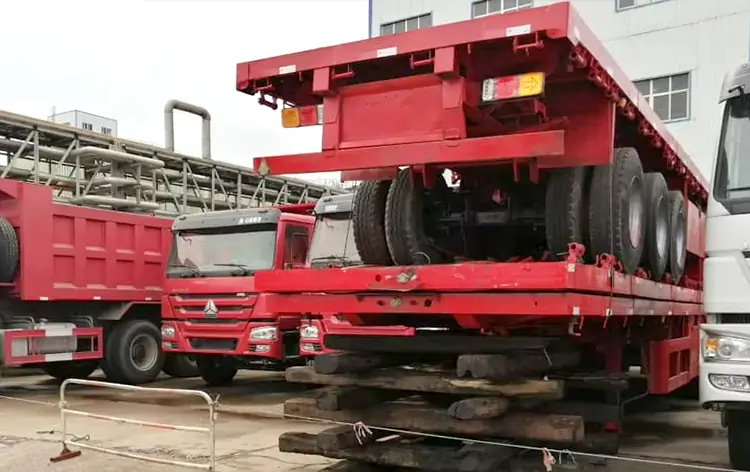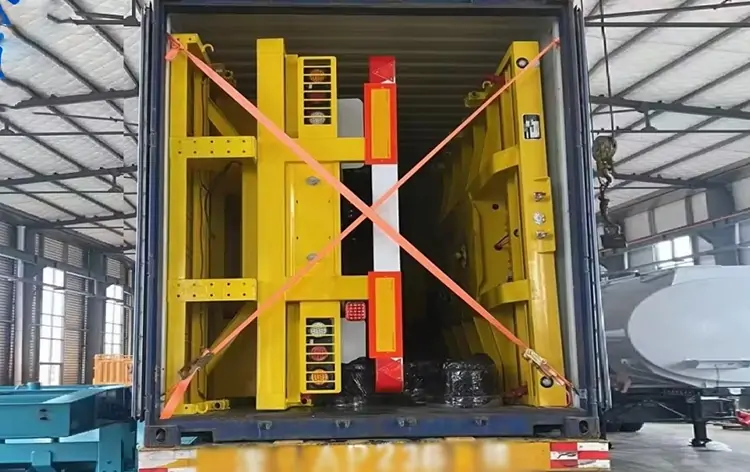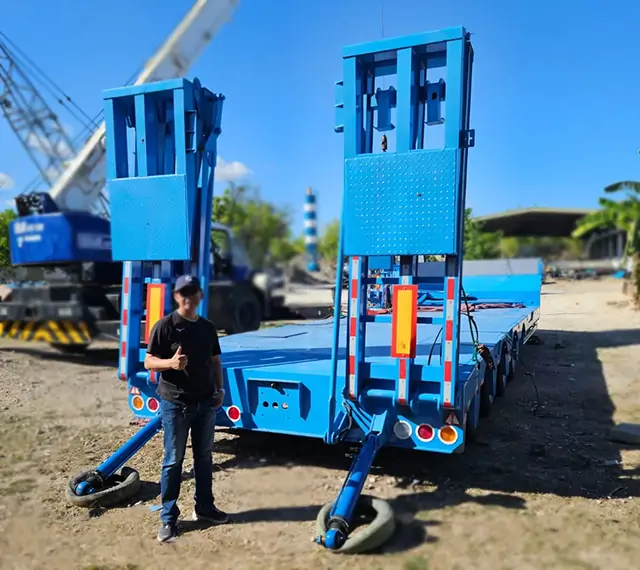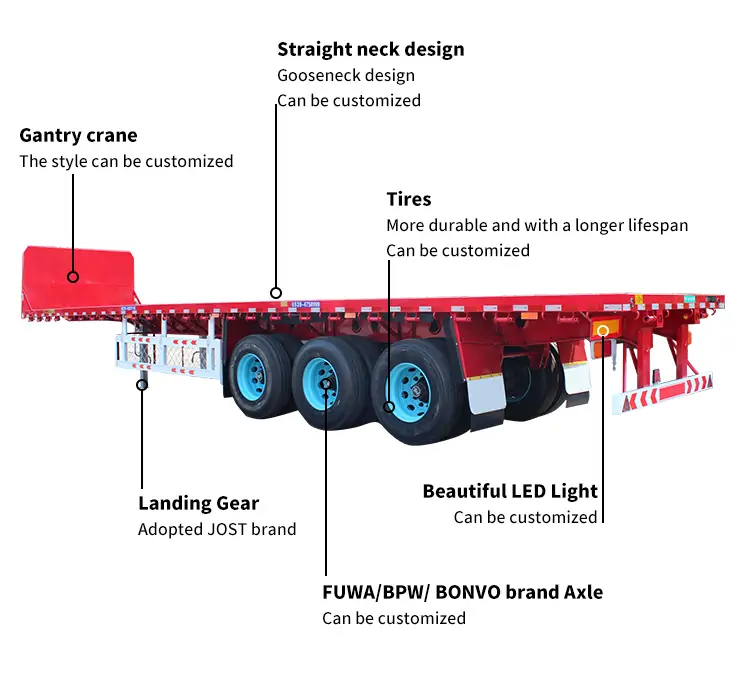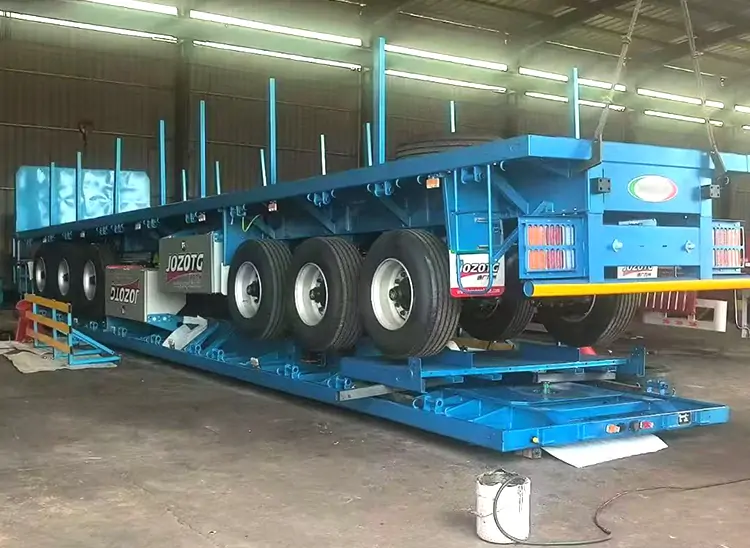A Dar-es-Salaam-based logistics company specialising in port-to-interior heavy haul has placed an order for three 13.75 m tri-axle flatbed semi-trailers to support Tanzania’s current infrastructure surge. The trailers are contracted to move more than 100 000 t of steel rail, pre-cast culverts and 20-ft containers over the next eighteen months along the Central Corridor. The procurement brief focused on corrosion resistance, parts availability and documented total-cost-of-ownership rather than purchase price alone. After a three-month technical evaluation the fleet chose a model that features full electrophoresis (E-coat) corrosion protection, making it one of the first Tanzanian fleets to adopt the technology for flatbed platforms working in a salt-laden coastal climate.
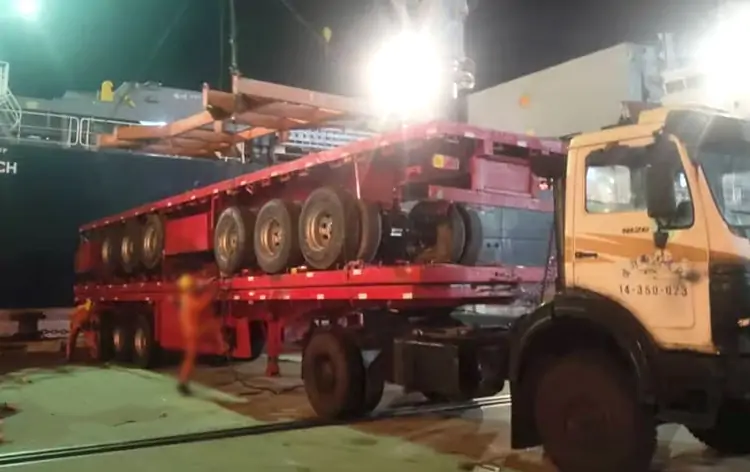
Electrophoretic deposition is an immersion process in which charged paint particles migrate under an electric field and form a uniform, micron-level film over every steel surface, including the sealed interior of box-section long-members. The production sequence comprises twelve stages: alkaline degrease, multiple water rinses, zinc-phosphate conversion coating, DI-water rinse, cathodic E-coat at 180–220 V for 120 s, and a 30-minute bake at 180 °C that cross-links the epoxy matrix to 25 µm. Salt-spray results (ASTM B117) exceed 1 000 h, five times the performance of typical air-dry alkyd finishes used by regional competitors. The throw-power rating of 15 cm ensures that the inner walls of 8 mm web stiffeners receive the same coverage as external flanges, eliminating crevice-corrosion initiation sites that normally shorten trailer life to five years in marine climates. Market data indicate that E-coat flatbeds now represent more than 90 % of new builds exported to East Africa, a share that has doubled since 2019 as operators factor residual value into procurement models.
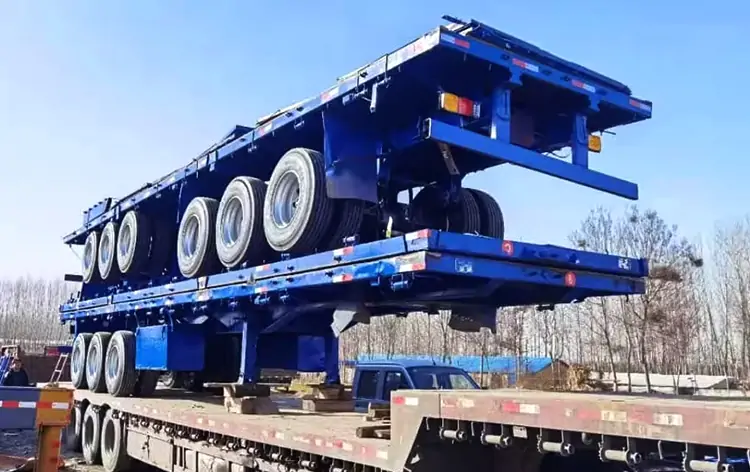
Beyond corrosion protection the E-coat film lowers surface friction by roughly 8 %, translating into a fuel saving of 0.12 L/100 km per trailer when convoying at 80 km h⁻¹ on the 550 km Dar–Morogoro tarmac. Over a projected 600 000 km life this yields 720 L of diesel, worth USD 960 at current pump prices—effectively offsetting the USD 450 per-unit premium that the coating adds to the purchase bill. More importantly the specification retains a dual-tyre configuration (12 × 12 R22.5 18 PR) that gives operators redundancy on the final 120 km of gravel feeder road where sharp basalt chips raise the puncture rate to one event per 10 000 km. With dual tyres a single blow-out does not immobilise the convoy; the driver can limp to the nearest village workshop, swap the damaged assembly and continue the mission with only a 5 % payload derate. That roadside repair is feasible because 12 R 22.5 casings, steel wheels and even stub-axle stubs are stocked by virtually every tyre bay along the Central Corridor, a logistical convenience that wide-base single-tyre fleets cannot replicate.
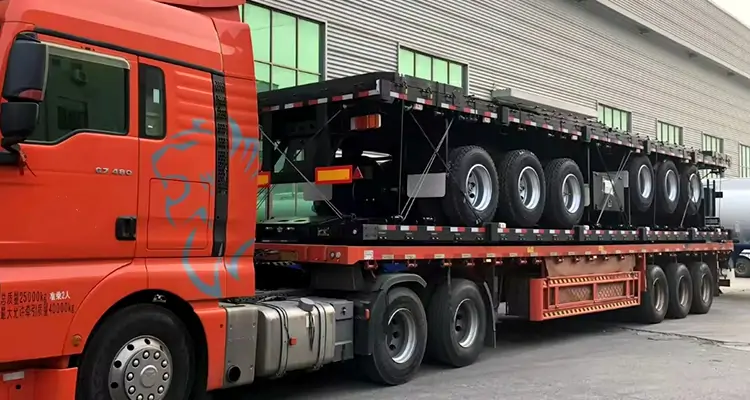
Prior to shipment the manufacturer exported a containerised “tech-pack” to the operator’s Dar yard: eight spare wheels, four hub-oil seals, two landing-gear gearboxes and a pneumatic torque-wrench calibrated to 670 N m for 10.9 grade wheel-nuts. A regional parts manager conducted a two-day training module on E-coat touch-up procedures, ensuring that stone-chip damage can be field-repaired using a two-part epoxy stick that cures in 30 minutes and matches the original 25 µm film thickness. Early telemetry from the first 18 000 km shows zero structural warranty claims, brake-stroke deviation within 2 mm and a consistent 28.5 t payload without exceeding 12 t per axle. Encouraged by these metrics the logistics company has already tabled an option for three additional units in 2025, contingent on infrastructure funding tranche release. In summary, the marriage of electrophoresis coating technology and conservative mechanical specification delivers a Tanzania-ready flatbed that survives coastal salt, gravel punctures and 24-hour utilisation while keeping operating cost per tonne-kilometre the lowest in the operator’s 200-vehicle fleet.
